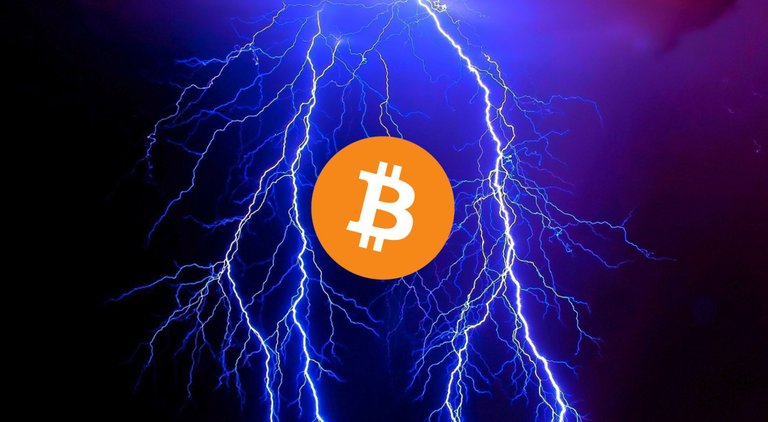Send hundreds of bitcoins via Lightning will be easier with this solution

Key facts:
Using probabilistic models, the best route to send bitcoins on Lightning is calculated.
The method could increase the potential capacity of the Lightning network.
In life, the most direct path is not always the quickest, the shortest or the one that involves the least effort. Obstacles can always arise. The same is true of the Lightning network, which functions as Bitcoin's second layer, and through which hundreds of bitcoins are sent between thousands of nodes with open channels between them.
In this huge interconnected network, the satoshis (the smallest unit of bitcoin or BTC), travel until they reach their final destination, inclined to choose the shortest, fastest or cheapest path in commissions. But what if we can use all these options at the same time? Will it be possible to travel several paths at the same time to reach the same common goal? It sounds like a quantum physics approach, but with the Lightning network it is possible to fulfill this thesis.
To achieve this, researchers propose a mathematical and probabilistic solution to estimate the best routes in the Lightning network to send bitcoins. But they also propose to split the payment and send its fractions separately, testing live which are the best routes available to consolidate the transaction.
The paper "Optimally Reliable & Cheap Payment Flows on the Lightning Network" was published on July 13. This is the work of researchers René Pickhardt and Stefan Richter, published open source and partially sponsored by the Norwegian University of Science and Technology (NTNU), as well as peer review.
Bitcoin educator Andreas Antonopoulos and Lightning developer René Pickhardt recently participated in an episode of the WhatBitcoinDid podcast, moderated by Peter McCormack, where they discussed Lightning's scalability and this specific solution, among other topics.
Antonopoulos, known for explaining complex Bitcoin concepts in a simple way, claimed that this would be one of the biggest innovations of the moment, and would allow potentially larger payments to be sent than what is typically sent in Lightning.

For the last year there has been a technology in Lightning Network called Multi-Path Payment. With this, instead of sending payments through a set of Lightning channels or a single path, now what we can do is to split them into small fractions and send them through different channels and paths.
(...) How do you split this payment? Which channel to use to send all the fractions? These are the questions, the problem of getting the best possible route, which are the basis of the enormous innovation that René (Pickhardt) has achieved with his research (...).
- Andreas Antonopoulos, Bitcoin popularizer.
What is sought is to use several channels to reach the same common goal, or a single final address. This is done with the purpose of sending large amounts of bitcoins using each and every one of the best options or channels available, when there is only a single recipient of the payment.
For his part, René Pickhardt explained that he was very surprised when, in a simulation, he noticed that he could send a large amount of bitcoins through Lightning, thanks to the results of the algorithm he designed to compute which are the best channels to use to trace the payment route.
Pickhardt argued that the larger the bitcoin payment, the more likely Lightning would be unable to process it, due to the limited capacity of the channels.
Antonopoulos commented on the podcast that he found it fascinating how a payment can be "spread out" or "flood" the Lightning network with transactions. Pickhardt explained that this is a mathematical problem of flows, so it was accurate to refer to this as a "flood" of payments through the network channels.
What we did was to split the amount into 250 different fractions, of very small amounts, and send them to someone. When we created these Multi-Party Payment (MPP) flows, and sent them out, we found that 75% of the balance sent reached its destination on the first attempt, the rest was returned to us. What we did was to use the information collected with the confirmed and rejected payments to adjust our estimate of the state of the network, and then run the second round of payments. In total I had to do this in four rounds to be able to send these bitcoins on the Lightning network, and I don't think anyone has ever accomplished this before.
- Rene Pickhardt, Developer.
For his part, Antonopoulos pointed out that if we wanted to send 0.5 BTC on the Lightning network, to give an example of a large amount for this second layer, it would be better to split the payment into 20 parts and pay less commission, than to do it in two parts and pay more.
At the moment there are no applications that integrate this method as part of their native functions, but it is expected that it will continue to be developed in the future.
Pickhardt received a donation of EUR 10,000 each from Antonopoulos and McCormack to support him in continuing his journey as a Lightning developer.
Regarding Lightning, during last June the network exceeded its numbers in terms of available channels and nodes, as well as the amount of circulating bitcoins. There are currently more than 22,830 nodes, 56,600 channels and 1,840 BTC circulating on the Lightning network, according to 1ML.
What Bitcoin Did

Posted Using LeoFinance Beta